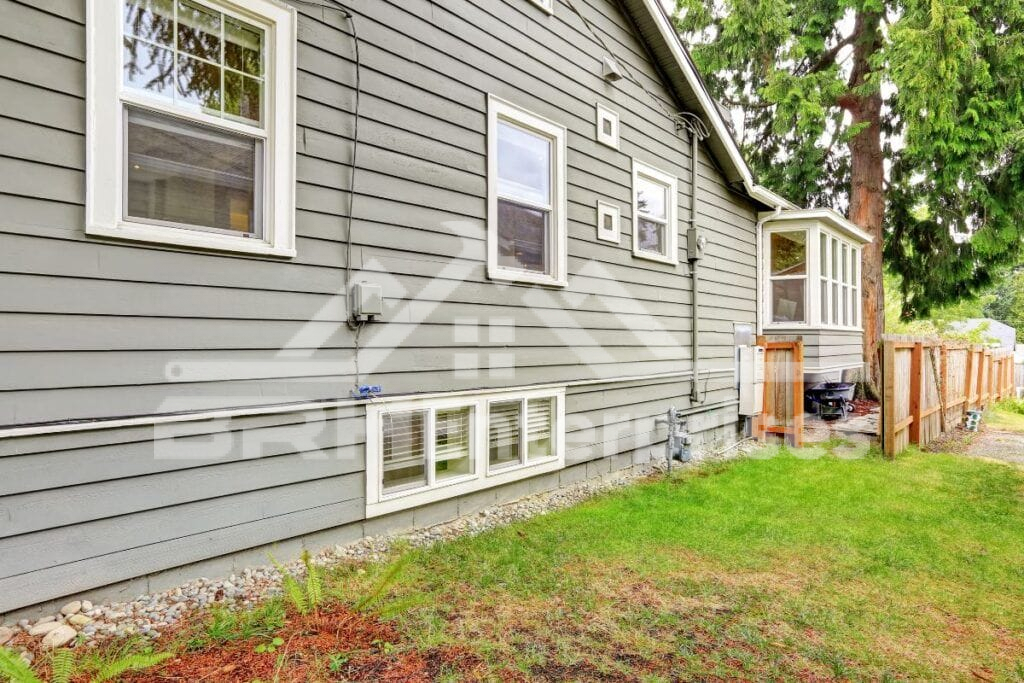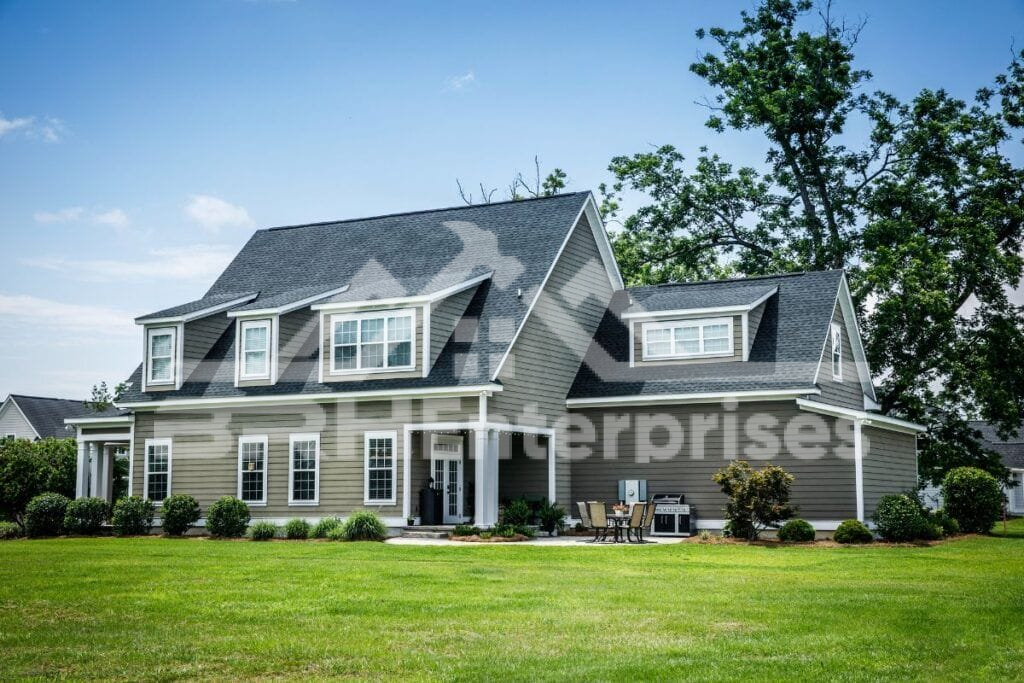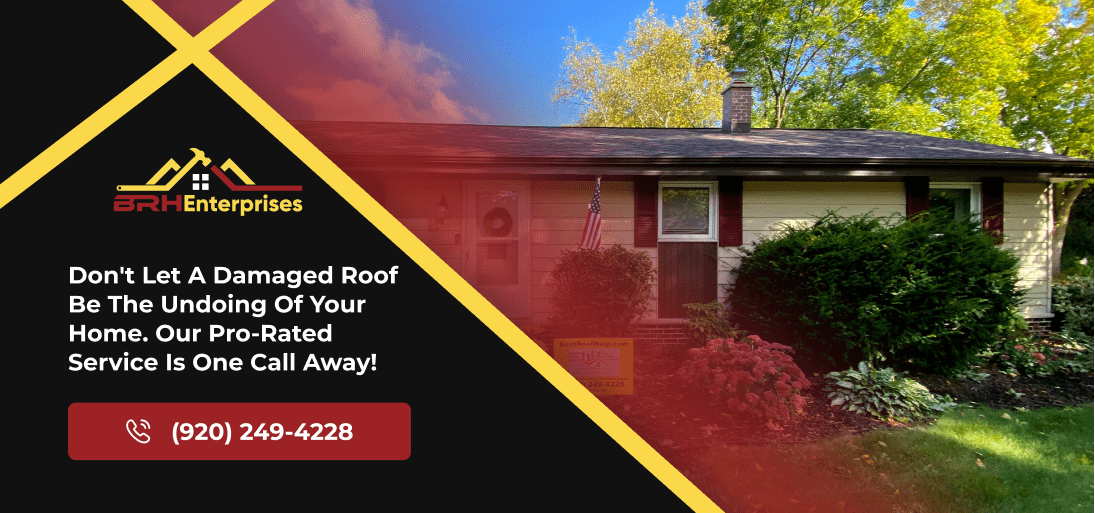Can I Install New Siding Over Old Siding?
Estimated Reading Time : 5 Min.

Are you thinking about updating your home with new siding and are wondering if you could put new siding over the existing panels? Simply put, the answer to that question is no.
In this blog post, we will go over the benefits and drawbacks of installing new siding over old siding and offer recommendations on when a complete replacement may or may not be necessary.
Why Installing New Siding Over Old Siding Is a Big No
For a number of reasons, it is typically not a good idea to install new siding over old siding. To start, it may conceal problems. Installing new material over damaged old siding can trap moisture and exacerbate the deterioration, necessitating more costly repairs down the road. Adding new siding is just hiding the issue rather than resolving it.
Furthermore, new siding over old might interfere with a home’s ability to “breathe,” which can lead to mold and moisture problems. Removing the old siding is the best approach to ensure proper installation. And for some manufacturers, adding their panels over existing siding voids the warranty.
Finally, if you cover the old siding with new, especially if the original siding is in poor condition, it might look strange on your home. In order to understand the condition of your home, address any problems, and ensure that everything looks beautiful and functions correctly, it is usually preferable to remove the old siding first.
Pros and Cons of Installing New Siding Over Old Siding
Installing new siding over existing siding has a number of advantages.
Pros
- Saves Money: It’s cheaper because you don’t have to remove and dispose of the old siding, making the whole project more affordable.
- Manages Time: Installing new siding over the old one is faster than taking the old siding off first, meaning less disruption to your home and a quicker job.
- Better Protection: Your home is better protected from the elements and may even become more energy-efficient with the new siding.
- Visually Appealing: New siding can make your home look better on the outside, improving its curb appeal.
Even though it can save money and time to install new siding over old, there are situations when it’s preferable to remove the old siding first. With this, you can ensure that everything fits together properly and search for any hidden issues. The decision depends on your situation and the state of your current siding.

Cons
There are some challenges to think about when installing new siding over old siding:
- Possible Structural Issues: If the old siding is too damaged, it might not be a strong base for the new siding. This could lead to structural problems, and you might need to fix the old siding or remove it before putting on the new panels.
- Looks Might Not Match: Putting new siding over the old one can make your home look uneven. This could affect how your home looks and its overall value.
- Harder to Maintain: Keeping the new siding in good shape might be trickier if there are still issues with the old siding underneath.
- Consider Extra Costs: Even though putting new siding over old siding can save money upfront, you might need to spend more if there are extra repairs or changes needed before installing the new siding. It’s important to think about the overall cost.
Before deciding, check the state of your existing siding and weigh the pros and cons.
Signs You Need A Full Siding Replacement
It’s important to evaluate the condition of the existing siding before choosing to install new siding over old siding. High energy bills, bubbling, mold, mildew, warping and rippling, pests, chipping exterior paint, cracks, rot, and fungus are all indicators of damage or wear that need to be taken into account. These signs point to the possibility that replacing or repairing the outdated siding is necessary.
It is crucial to promptly address siding issues in order to stop further damage to the home, such as possible structural and moisture issues. It’s a good idea to speak with a reliable siding contractor so they can assess whether the damage can be fixed or if a full siding replacement is required.

Factors to Consider
Before deciding on new siding, homeowners should think about important factors like local building codes, how strong their home’s structure is, moisture issues, and insulation. Local building codes tell you the rules for siding in your area, like what materials and methods are allowed.
Checking the current siding’s strength is crucial. If you see problems like wood rot, damage, or missing pieces, it might affect your decision on what siding material to get. Also, old siding can make your home less energy-efficient, so choosing new siding that saves energy and improves insulation is a good idea to cut down on energy costs.
Pick a siding material that’s both energy-efficient and durable. Thinking about these factors can help homeowners make a smart decision about their new siding.
When to Consider a Full Replacement
If you spot any of these signs, a full siding replacement is probably the right choice.
- Major Damage: If the old siding has significant damage or is showing signs of deterioration, it might make more sense to replace it entirely for a consistent and long lasting finish.
- Aesthetics: If the old siding looks really faded, shows signs of rot or warping, and has cracks, replacing it could be more cost effective than fixing it. New siding can make the home more weatherproof, energy-efficient, and increase its curb appeal.
- Pests: Damaged siding can let pests like insects, rodents, or termites in. If there are signs of pests, it’s crucial to fix the issue and think about replacing the siding to stop more damage.
- Rot or Moisture: If parts of the siding are rotten or warped, it means there’s water damage that could harm the home’s structure. If you can feel soft spots or see signs of water infiltration, replacing the siding quickly is important.
Remember, these are general suggestions, and it’s a good idea to talk to a professional contractor. They can check the siding’s specific condition and give expert advice on whether replacing it is the best move.
Conclusion
To sum up, putting new siding over old siding is generally not the best idea for most homeowners. While it might seem like a budget friendly and quick solution, it’s important to check the condition of your current siding, consider local building rules, and get advice from professionals for a more effective and lasting solution.
Contact BRH Enterprises For The Best Siding Services
When it comes to handling a siding project, it’s important to get in touch with a local contractor as soon as possible. Calling professionals to your home offers several benefits that can help stop further damage and preserve the well being of your home.
Contact BRH Enterprises for all your siding needs. Our team will assess the condition of your siding and determine whether repairs or a full replacement is necessary. To speak with a siding expert, call BRH Enterprises at (920) 249-4228.


